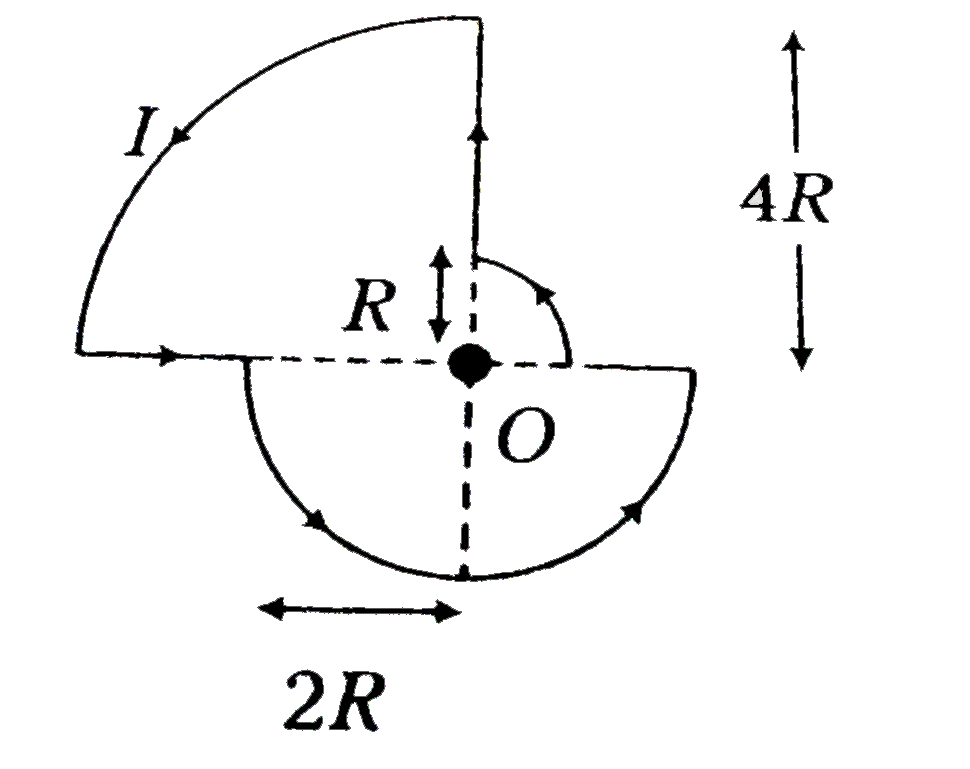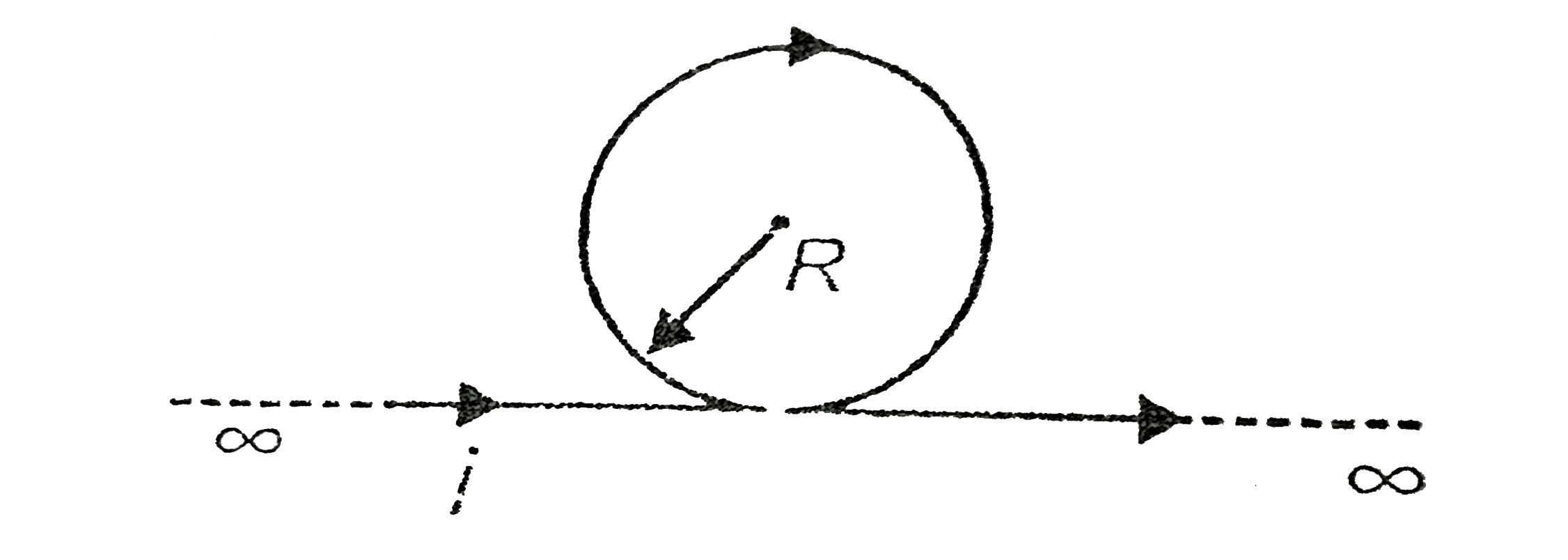Sketch the magnetic field lines for a current-carrying circular loop near its centre. Replace the loop by an equivalent magnetic dipole and sketch the magnetic field lines near the centre of the dipole. Identify the difference.
To solve the question of sketching the magnetic field lines for a current-carrying circular loop and an equivalent magnetic dipole, we can follow these steps:
Step 1: Sketch the Magnetic Field Lines for a Current-Carrying Circular Loop
1. Draw the Circular Loop: Start by drawing a circle to represent the current-carrying loop.
2. Indicate the Direction of Current: Mark the direction of the current flow (clockwise or counterclockwise).
3. Draw Magnetic Field Lines:
- From the center of the loop, draw lines that emerge outward from the loop in a circular pattern.
- As the lines move away from the loop, they should curve around and return to the loop, indicating the closed nature of magnetic field lines.
- Near the center, the lines should be nearly parallel, indicating a uniform magnetic field in that region.
Step 2: Replace the Loop with an Equivalent Magnetic Dipole
1. Draw the Magnetic Dipole: Represent the magnetic dipole with a small arrow pointing from the south pole to the north pole.
2. Sketch the Magnetic Field Lines for the Dipole:
- Draw lines that emerge from the north pole and curve around to enter the south pole.
- The lines should be denser near the poles and spread out as they move away from the dipole.
- Unlike the loop, the lines should not converge at the center but rather show a distinct pattern around the dipole.
Step 3: Identify the Differences
1. Field Lines of the Loop: The magnetic field lines for the current-carrying loop are concentrated and form closed loops, with lines being parallel near the center.
2. Field Lines of the Dipole: The magnetic dipole's field lines do not converge at the center; instead, they originate from the poles and curve around, indicating a more complex field structure.
3. Key Difference: The current-carrying loop has magnetic field lines at the center, while the magnetic dipole does not have lines converging at its center.
Final Sketches
- Current-Carrying Loop: A circle with outward curving lines that return to the loop, showing a uniform field near the center.
- Magnetic Dipole: An arrow with field lines curving from the north to the south pole, illustrating the dipole's magnetic field.
1. Draw the Circular Loop: Start by drawing a circle to represent the current-carrying loop.
2. Indicate the Direction of Current: Mark the direction of the current flow (clockwise or counterclockwise).
3. Draw Magnetic Field Lines:
- From the center of the loop, draw lines that emerge outward from the loop in a circular pattern.
- As the lines move away from the loop, they should curve around and return to the loop, indicating the closed nature of magnetic field lines.
- Near the center, the lines should be nearly parallel, indicating a uniform magnetic field in that region.
1. Draw the Magnetic Dipole: Represent the magnetic dipole with a small arrow pointing from the south pole to the north pole.
2. Sketch the Magnetic Field Lines for the Dipole:
- Draw lines that emerge from the north pole and curve around to enter the south pole.
- The lines should be denser near the poles and spread out as they move away from the dipole.
- Unlike the loop, the lines should not converge at the center but rather show a distinct pattern around the dipole.
1. Field Lines of the Loop: The magnetic field lines for the current-carrying loop are concentrated and form closed loops, with lines being parallel near the center.
2. Field Lines of the Dipole: The magnetic dipole's field lines do not converge at the center; instead, they originate from the poles and curve around, indicating a more complex field structure.
3. Key Difference: The current-carrying loop has magnetic field lines at the center, while the magnetic dipole does not have lines converging at its center.
- Current-Carrying Loop: A circle with outward curving lines that return to the loop, showing a uniform field near the center.
- Magnetic Dipole: An arrow with field lines curving from the north to the south pole, illustrating the dipole's magnetic field.
Topper's Solved these Questions
- PERMANENT MAGNETSBOOK - HC VERMA ENGLISHCHAPTER - PERMANENT MAGNETSEXERCISE - Exercise
25 Videos
- OPTICAL INSTRUMENTSBOOK - HC VERMA ENGLISHCHAPTER - OPTICAL INSTRUMENTSEXERCISE - Question for short Answer
12 Videos
- PHOTO ELECTRIC EFFECT AND WAVE PARTICLE DUALITYBOOK - HC VERMA ENGLISHCHAPTER - PHOTO ELECTRIC EFFECT AND WAVE PARTICLE DUALITYEXERCISE - question for short answer
13 Videos
Similar Questions
What will be magnetic field at centre of current carrying circular loop of radius R?
View SolutionThe magnetic field at the centre of the current carrying coil is
View SolutionA circular loop carrying a current is replaced by an equivalent magnetic dipole. A point on the axis of the loop is in
View SolutionA circular loop carrying a current is replaced by an equivalent magnetic dipole. A point on the axis of the loop is in
View SolutionThe magnetic dipole moment of a current carrying conducting loop depends on
View SolutionFind the magnetic field at the centre O of the loop shown in the figure

View SolutionFind the magnetic field at the centre O of the loop shown in the figure

View SolutionFind the magnetic field at the centre of the circular loop shown in figure.

View SolutionThe magnetic field due to a current carrying circular loop of radius 3m at as point on the axis at a distance of 4m from the centre is 54μT. What will be its value at the centre of the loop.
View SolutionWhen a current in a circular loop is equivalently replaced by a magnetic dipole.
View Solution